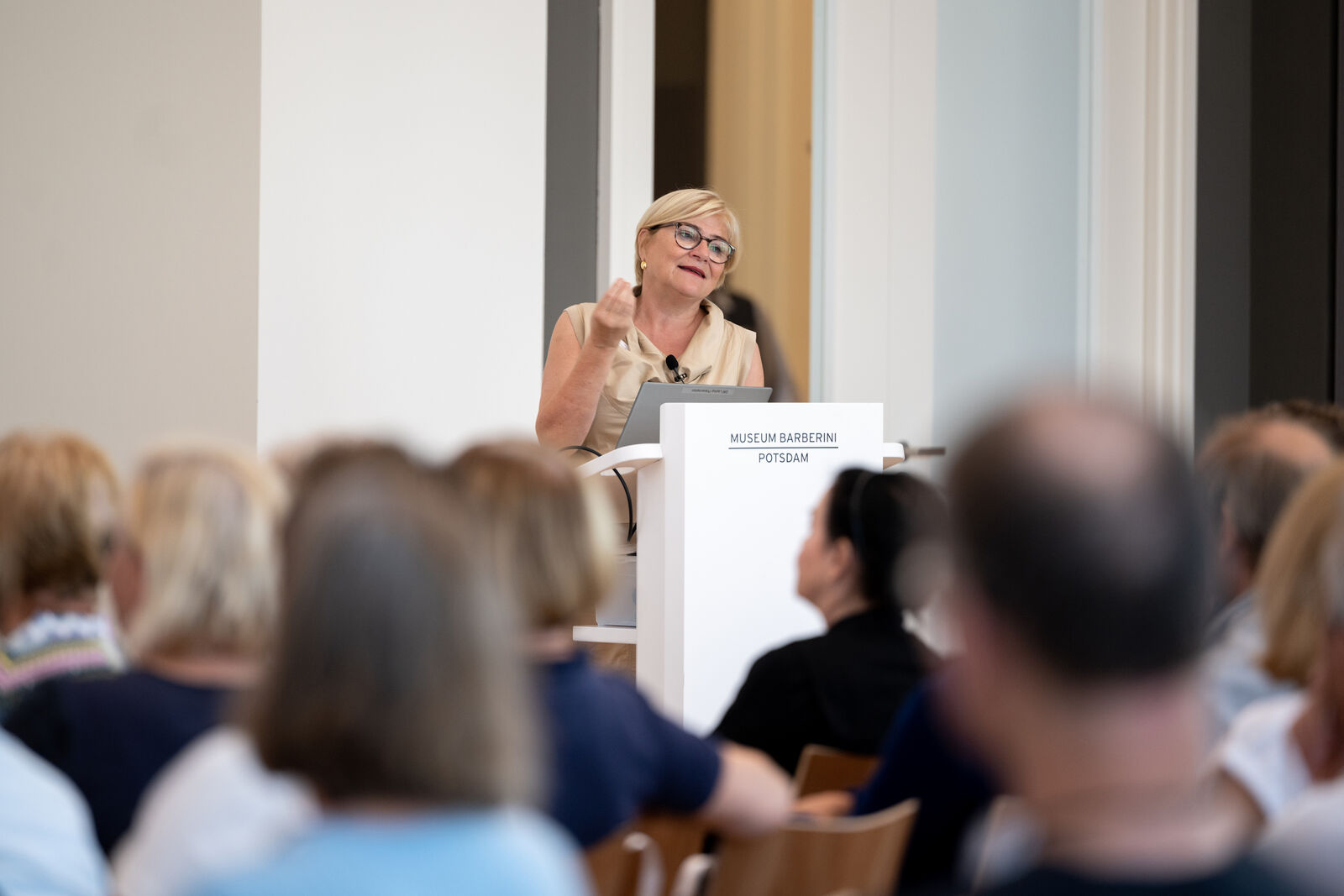
Sebastian Bolesch
Online Art Lectures
Wed, 6:30 p.m.
In the Online Art Lectures series the Museum Barberini offers digital lectures on its current exhibition topics. Museum curators, conservators, and guides speak about their various disciplines and areas of work, offering a glimpse behind the scenes and opening up new perspectives on the works.
Wed, November 19, 6:30 p.m.
Wed, November 28, 6:30 p.m.
Woman and Unicorn
Ira Oppermann, Art Historian
For centuries, the unicorn has fascinated people as a mythical creature. Its recurring connection with the female figure is particularly striking. But what lies behind this mysterious relationship? This lecture invites you on a journey through centuries and cultures. It sheds light on the complex meanings attributed to this mythical creature in connection with women—from religious allegories to feminist interpretations. The diversity of representations shows how the unicorn reflects social ideas of femininity. In the 20th century, female artists opened up entirely new perspectives in their exploration of this motif.
Wed, December 17, 6:30 p.m.
In cooperation with the Gay Museum
Unicorn in the Mirror
Dr. Marian Wild, art historian, author, curator
The unicorn is an as enigmatic as fascinating animal. For thousands of years, it has captured the imagination of people in legends, imagery, and dreams, from ancient times to the internet. Its form reflects the longings and ideas of those who behold it: Is it a vain animal, a children's fairy tale, a shy horse, or a symbol of sexuality? In this lecture, Marian Wild explores various facets of the unicorn, with a special focus on references to queer culture, and questions their meaning.
Costs
€ 5
Runtime
50 minutes
Booking
Online
Venue
Online lecture (in German) via Zoom
Please note
You will receive a link to the online lecture at your e-mail address before the event. Please also check your spam.
Dates and tickets
-
Wed, Dec 17, 5:30 p.m.
-
Wed, Jan 28, 6:30 p.m.